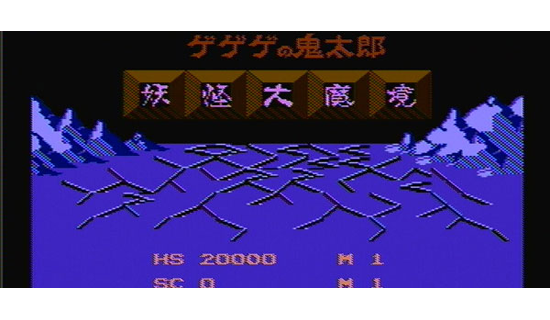It’s interesting to see the early results of a piece of distinctly Japanese source material being made into a game franchise. Gegege no Kitarou is a manga series by Shigeru Mizuki, created way back in 1959. Though Mizuki’s series was originally named “Hakaba Kitarou” (“Kitarou of the Graveyard”), “Gegege no Kitarou” was the name of the slightly more kid friendly animated series that was created by Toei in 1968, based on the manga series. It has since been adapted into numerous other animated and live action series and features. While the light hearted and humorous horror vibe that Gegege no Kitarou gives off is not a completely Japanese idea, the ghosts and various monsters (or “youkai”) that appear in the series are brought to life straight out of Japanese fairy tales and folk lore. The aesthetic is one not often experienced, so one might wonder how something so unique would translate into a video game back in 1986. The answer, thankfully, is not badly.
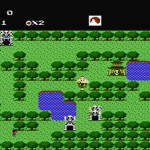 | 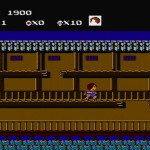 |
| The over world map | A look at what a level might look like. With this one in particular, it’s easy to see why this game was localized as a ninja game! |
Like many other games from this time, Gegege no Kitarou is a side-scrolling action game in an arcade style. Arcade style in the sense that the game itself has no ending, and loops back to the beginning after 16 stages. The point is really to get a high score rather than see an ending or experience any sort of story. And though the game tells no story on its own, fans of Gegege no Kitarou will find plenty to appreciate in the details. Kitarou attacks with a variety of weapons: Remote-control geta, a finger gun, his rather distinct jacket, and good old fire bombs. While a lot of the art in these anime licensed games was very poor and lazily done, Gegege no Kitarou’s art is actually quite good. Kitarou’s sprite is immediately identifiable, and many other classic characters from the series make mid-level appearances as well. A good 8-bit version of the Gegege no Kitarou theme song plays at various points throughout the game, and the levels themselves all seem like areas used as a backdrop in an episode or volume of Kitarou. This makes the atmosphere of the game feel surprisingly true to its source material. Though the feel of jumping can take a little bit of getting used to, the controls handle well.
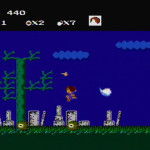 | 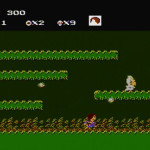 |
| What would Gegege no Kitarou be without a graveyard level? | That Nezumi Otoko actually looks really good! |
For an arcade style action game, Kitarou has some interesting systems at work. Initially the player moves a tiny sprite of Kitarou over a world map containing a handful of levels. Once a player enters a level, the side-scrolling action begins. Each level’s background and type is randomly generated each time. There are 4 different types of levels, each with different goals that must be completed in order to clear the level (please note that these names are a bit strange to translate, so I left them all in Japanese): Youkimakyou (Collect 10 of the ghost spirits floating in the air), Youkaimakyou (Simply defeat 10 enemies), Youkuumakyou (One of my favorites: Kitarou is flying on Ittan Momen in a shooter style level. Here you must also defeat 10 enemies), and Youenmakyou (Light 10 of the candles throughout the stage). After a level is cleared, two doors appear. One will lead to an end of level boss (this is described as falling into “youkai jigoku” or “Ghost Hell”), and the other will let the player out of the level without having to do anything further. Once all levels on a map are completed, the final area is typically a boss as well.
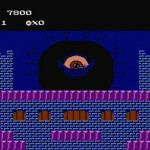 | 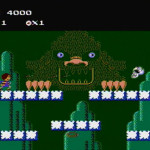 |
| One example of a level boss: a giant eyeball! | Another example of a level boss: some sort of furry monster! |
Kitarou was actually was localized and released in the US under the name “Ninja Kid”. It’s the exact same game apart from two things: Kitarou’s sprite was replaced by that of a ninja kid (obvious), and the bits of TV anime theme song that plays throughout the game was replaced by more generic music. Worse localization decisions than this happened during the Famicom era!
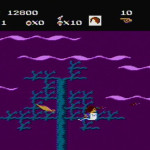 |  |
| Flying on Ittan Momen in a shooter style level, such a nice touch! | This first world boss seems to be some sort youkai rock star? |
Though it may not look like much, Kitarou is actually a fairly standout title compared to its fellow anime licensed contemporaries. When I’m in the mood for something that I can just pick up on the Famicom, I sometimes revisit Kitarou. There would be quite a few other Kitarou games after this, but this was a good solid start.
